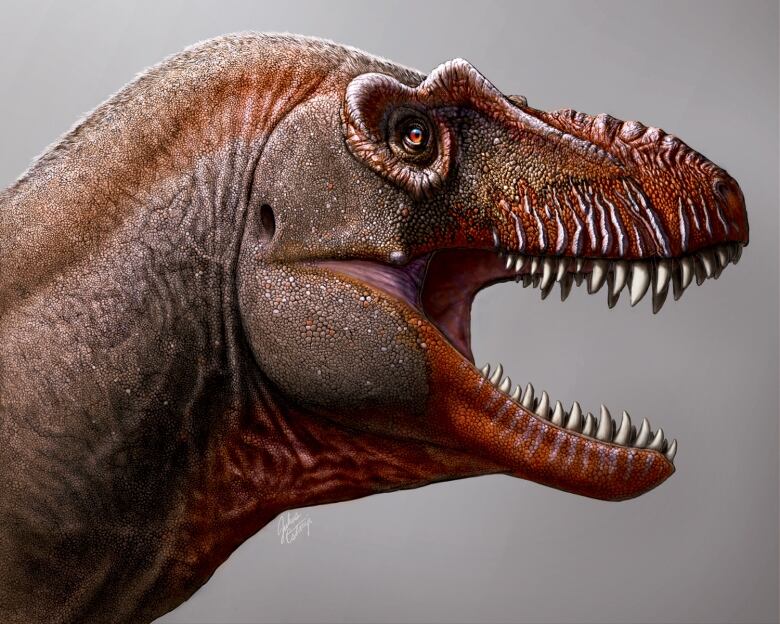A new species of tyrannosaur — the oldest ever found in Canada — has been discovered in Alberta.

A new species of tyrannosaur — the oldest ever found in Canada — has been discovered in Alberta.
Thanatotheristes degrootorum was as long as two cars lined up bumper to bumper and would have towered over an adult human. It stood about 2.4 metres tall at the hips, said Jared Voris, a University of Calgary PhD candidate who led the research identifying it as a new species.
The animal would have been a fearsome predator 79 million years ago during the late Cretaceous period, likely preying on herbivores such as the horned dinosaur Xenoceratops and the dome-headed dinosaur Colepiocephale.
Those are the only two other dinosaur species identified from the same location — a fossil site called the Foremost Formation — and the same period of time. At the time, it was coastal plain with swampy areas near an inland sea called the Western Interior Seaway that extended from the Arctic Ocean to the Gulf of Mexico.
Researchers who discover a new species have the privilege of naming it, so Voris canvassed his colleagues for suggestions.
The winner for the first part of the new dinosaur’s name translates roughly to “reaper of death” — coming from the Greek god of death Thanatos and the Greek word “theristes,” which means “reaper” or “harvester.” It was suggested by Amanda Hendrix, a master’s student in the same research group, which is led by Prof. Darla Zelenitsky, who co-authored the study.
“This animal would have absolutely been an imposing creature in the ecosystem that it lived in and it would very likely have been the apex predator,” Voris said. “It was really nice to have some sort of name that encapsulated that kind of behaviour.”

Found by m

